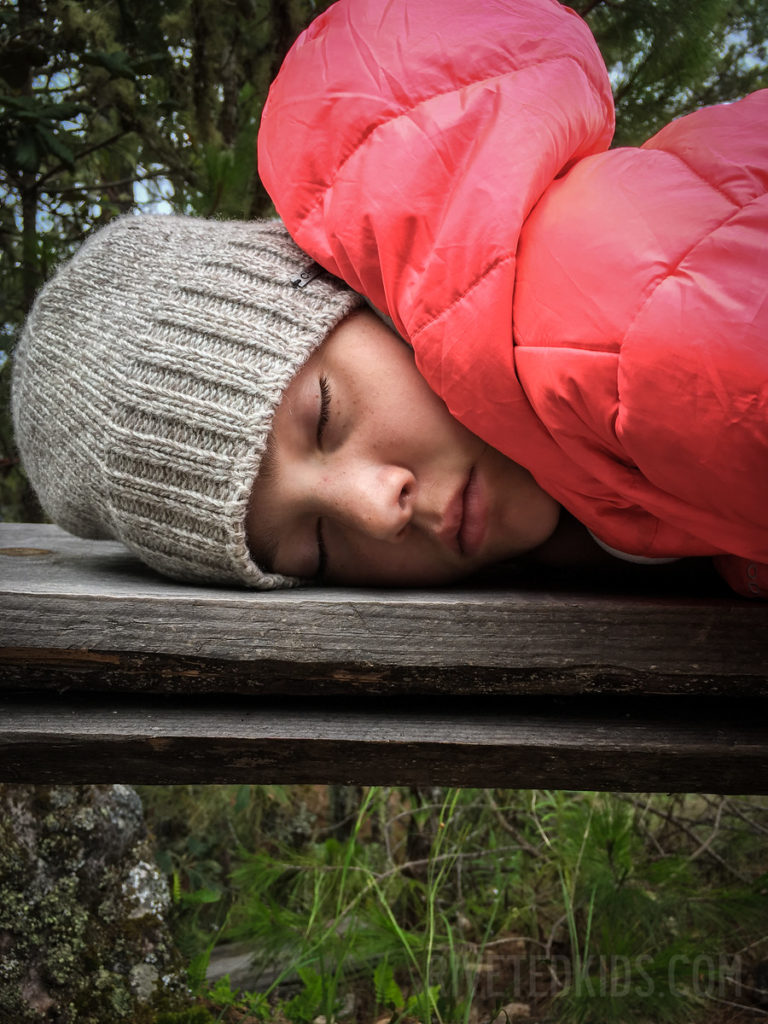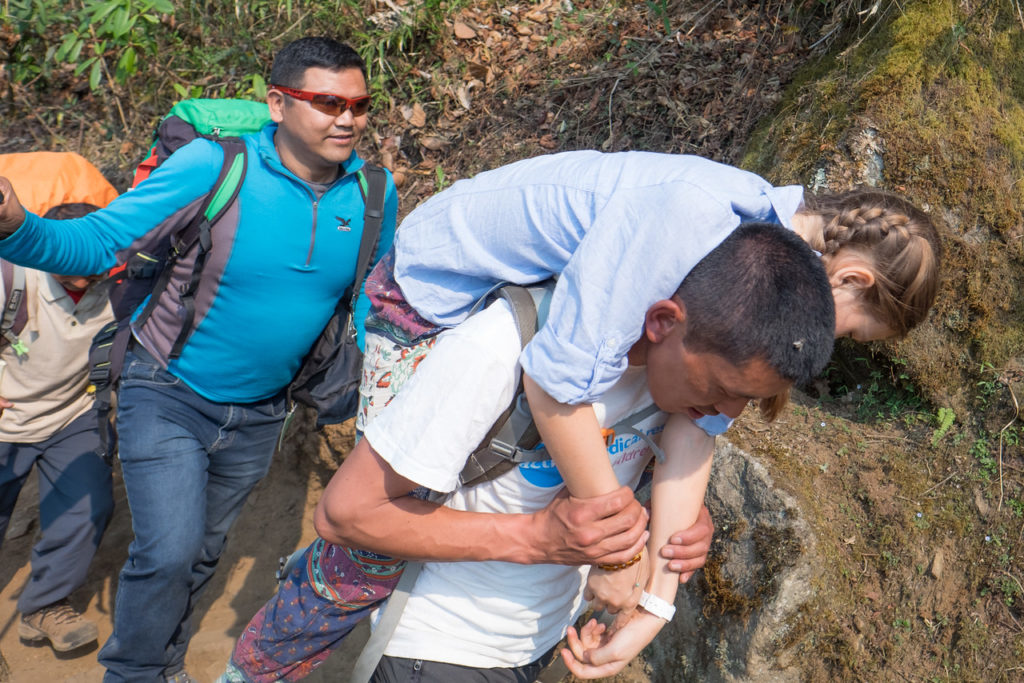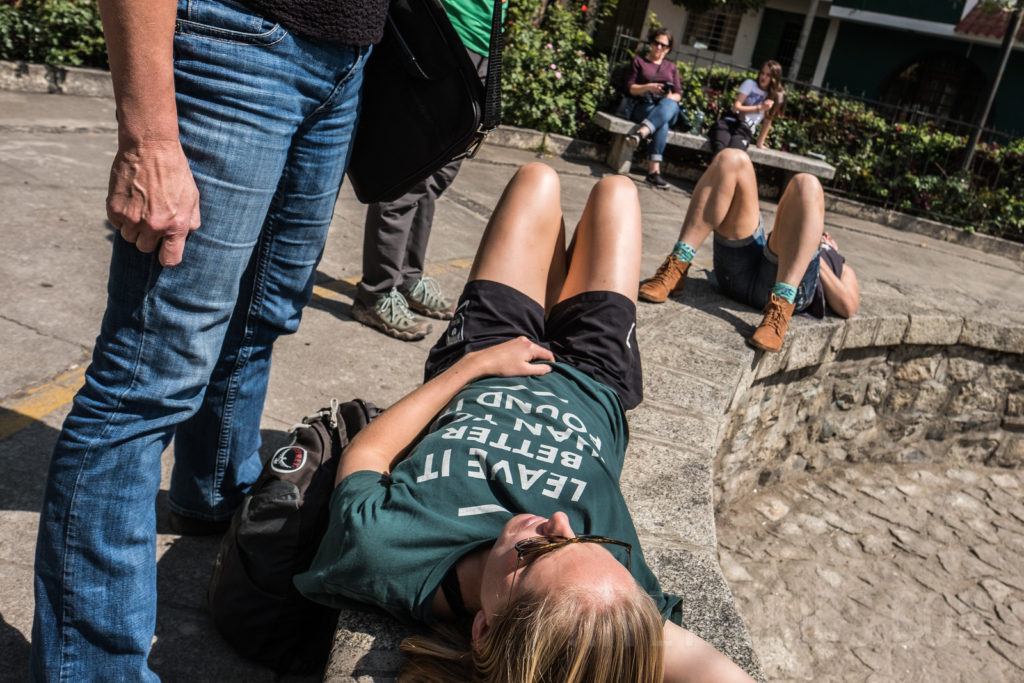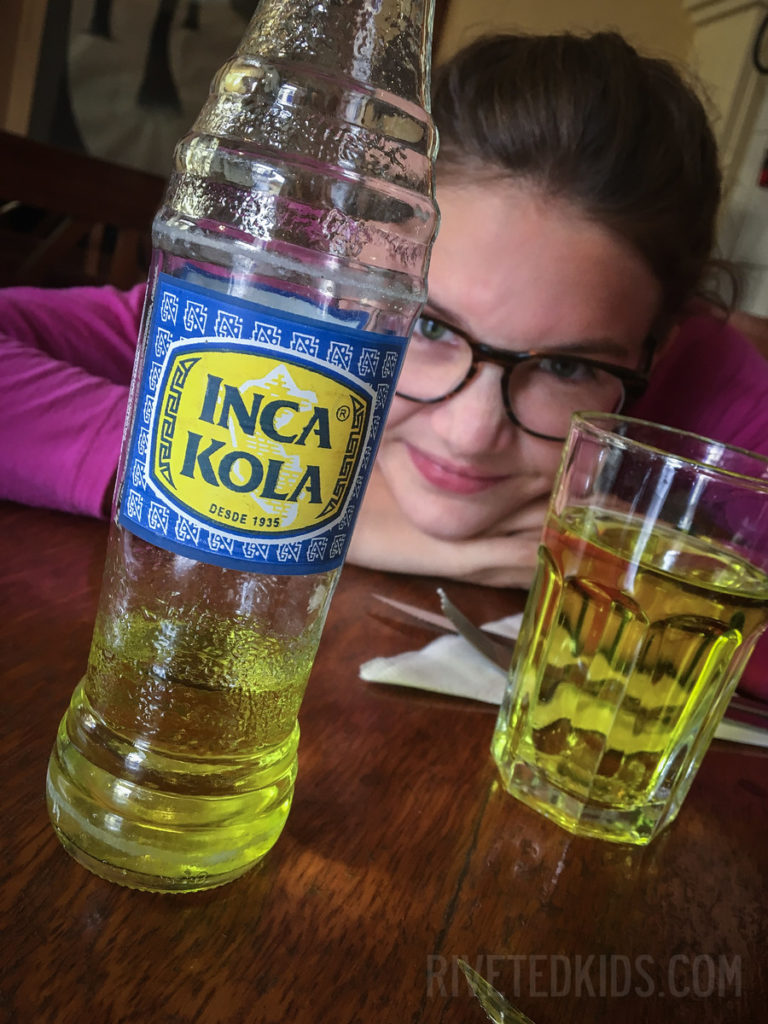Immediately after landing at the airport in Lukla, Nepal at 9,400 feet we felt listless. But we had some lunch, shouldered our packs, and headed onto the trail with our guide Pema and our porter Doji. About an hour in we stopped for tea and both Jay and Beija looked awfully pale. It took a fair amount of cheerleading to get them back on the trail but we moved on. Another 30 minutes in Beija started slowing down and, “Mom, I don’t feel…” then her lunch was all over the path. Altitude sickness strikes again. We ended up hiring some help to get her to a place we could stop for the night. See this post for all the gory details!

Beija’s symptoms are classic. If you or your kids are going to get sick it is likely to show up on your first day over 8,000 feet, but some experience it at lower altitudes. What scientists think is happening when you get sick is that your body is reacting to lower-oxygen air. Your brain swells slightly as it tries to get more oxygen and that can drive some of the symptoms of altitude sickness.
We did a poor job of being prepared for altitude sickness and it took a couple experiences in a variety of high altitude destinations for me to figure out what was happening. How could I have missed it? But our failure is your gain! Now I’ve done the research and have more tools in my altitude toolkit.

We’ve now had fun with altitude sickness in:
- Solokhumbu, Nepal ~14,500 feet
- Cusco and Ancash, Peru ~13,000 feet
- Cotopaxi, Ecuador ~12,000 feet
- Oaxaca, Mexico ~10,500 feet
Five ways to avoid being carried by a Sherpa
The Sherpa people are amazing, but there is not always a Sherpa strongman or gilded litter to step into at a moment’s notice. Also, moving under your own power is kind of the point, right? If you are headed to altitude with your kids here are five ways to avoid or reduce the pain.

1. Plan a slow(er)-climb itinerary
On our recent Peru trip I organized our itinerary so that after we landed in Cusco (10,800 feet) we headed lower to Huarán and Urubamba (~9,400 feet) in the Sacred Valley for a couple of days before going back to explore the city. It would have been even more ideal to spend a night under 8,000 feet first but you have to work with what you get.
2. Plan for rest
On the second half of our Peru trip we went from Lima (sea level) on an overnight bus to Huaraz at 10,100 feet. We were headed a little further into the mountains to help build a field in Vicos with Crooked Trails. Our trip coordinator, Chris, planned for a relaxing morning and day of slow wandering around town before we started field building activities in Vicos at about 13,000 feet. When heading to altitude try to plan a minimum of half a day of rest and you’ll be better off relaxing for 1-2 days. I know you want to get out there and see the new city or head out on the trail, but you’ll enjoy it so much more after a siesta, reading a book, and a leisurely lunch.

3. Pop some pills
There are tons of folk remedies and prescription medications out there to beat altitude sickness or mitigate the symptoms. This post details supplement and medication options.
4. Imbibe strategically
The researchers are in solid agreement that you should not be knocking back shots of tequila (or any other alcohol) to ease the pain of altitude. Caffeinated drinks can also be dehydrating (yes, that means coffee!), magnifying the symptoms of altitude sickness. The one thing you should be sucking down? Water. Lots of it. Like fill your 16oz water bottle 8 to 10 times throughout the day kind of lots.

5. Carbs
I’ve read this enough places that I’ll pass it on as a “possible” helpful tool. Some research has shown that a high carbohydrate diet improves energy and recovery at altitude. That shouldn’t be hard in Peru (potatoes) or Nepal (dal bhat), or Mexico (tortillas), or anywhere really. Pack your own trail mix or other high carb snacks if you need to.
When is altitude sickness dangerous?
Really, really important: If anyone in your party becomes disoriented, confused, appears drunk, has a rattle in their breathing, fever, a wet cough with frothy saliva, severe lethargy, or loses physical coordination take them down in elevation immediately with as little exertion as possible and get medical attention. They may have one of the two severe types of altitude sickness: pulmonary edema (HAPE) or cerebral edema (HACE). Either of these altitude reactions can result in death from respiratory failure or brain swelling if left untreated. HAPE and HACE are fairly rare, but you wouldn’t want to miss it!
Summing Up
You can find more information in these thorough articles: Institute for Altitude Medicine and Canada Communicable Disease Report on High Altitude Illnesses. Don’t miss our summary post on supplements and prescription medications that can help with altitude sickness coming next week!
Leave a Reply